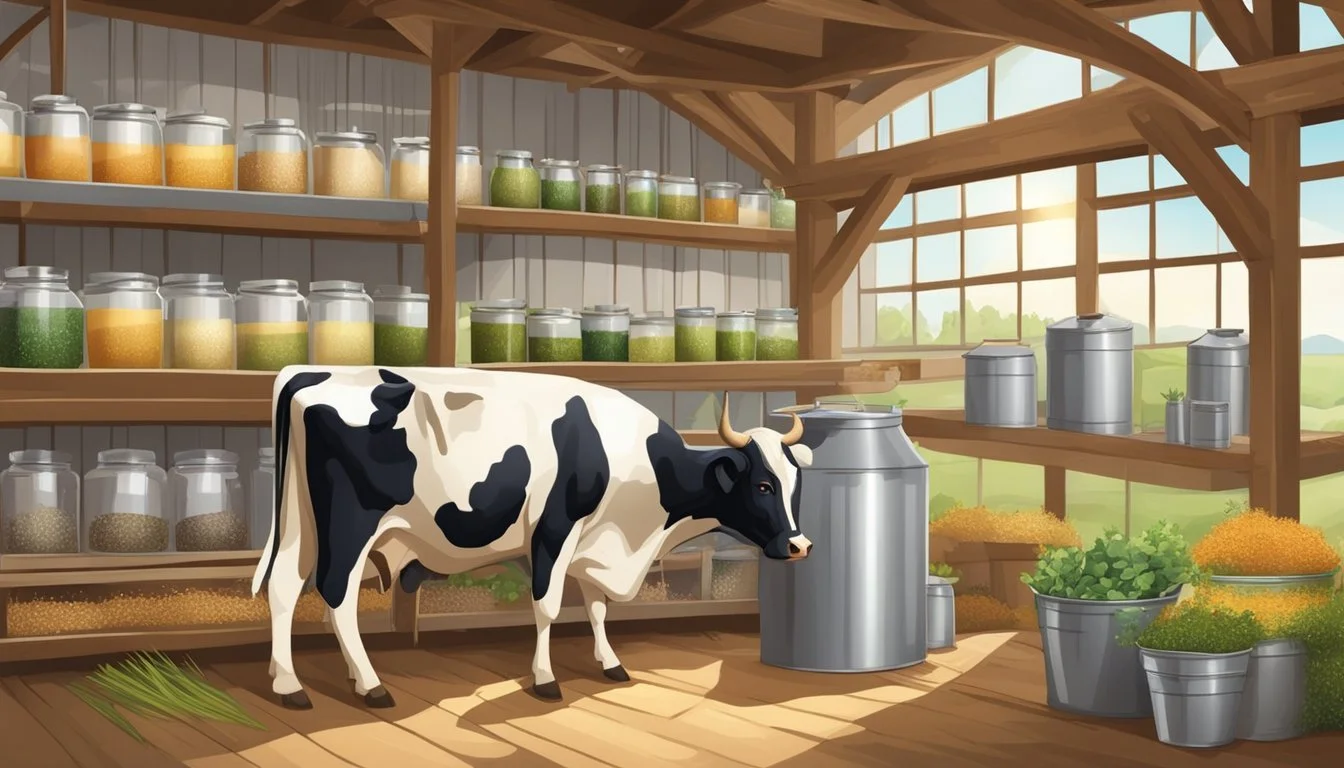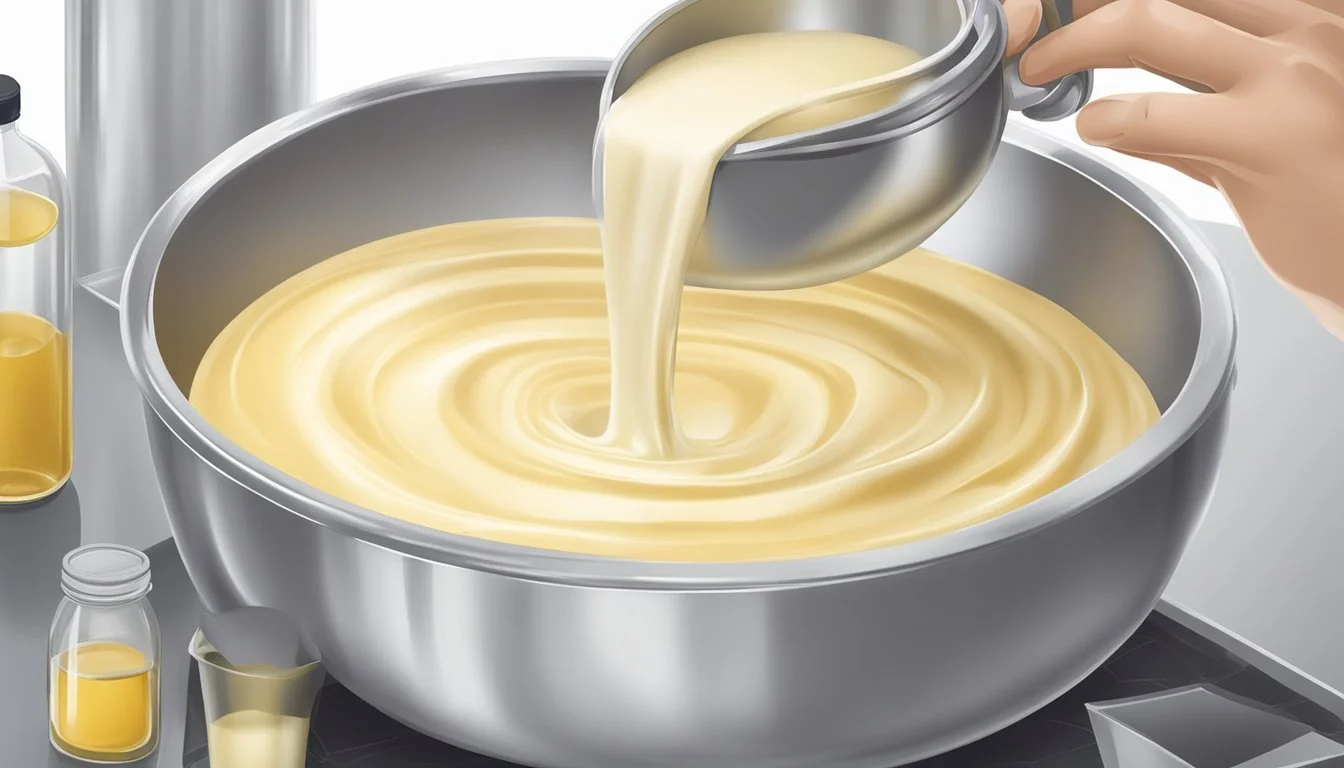The Influence of Raw Milk on Artisanal Soap Making
Unveiling Its Unique Benefits
Artisanal soap making has seen a significant resurgence, with raw milk playing a pivotal role in this craft's revival. Small-scale producers are increasingly incorporating raw milk into their soaps, catering to a growing consumer demand for natural and gentle skincare products. The unique properties of raw milk, particularly from cows and goats, contribute beneficial qualities to soap that are not present in soaps made with water or other liquids.
The use of raw milk in soap provides a rich, creamy texture as well as a host of vitamins and minerals beneficial for the skin. Milk-based soaps are often sought after for their hydrating properties, as the naturally occurring fats in the milk can help to moisturize and soften the skin. Moreover, the pH level in goat milk closely matches that of human skin, which can help to maintain skin health and prevent irritation. The combination of these qualities makes raw milk an influential ingredient in the artisanal soap industry.
In addition, the soap-making process itself is an art that benefits from the inclusion of raw milk. It allows for a gentle cold-process method that preserves the integrity of milk's nutrients and enzymes, which can be compromised by excessive heat. Artisanal soap makers value the quality and character that raw milk adds to their products, differentiating them from mass-produced alternatives. This value addition has contributed to the growing popularity of raw milk soaps, making them a staple in farmers markets and specialty stores, particularly during the summer months when skin care is a common concern.
The influence of raw milk on artisanal soap making has been remarkable, particularly due to its ability to impart a luxurious and creamy texture to handcrafted soaps. With the resurgence of raw milk delivery revival, artisans have been able to access this natural ingredient, despite the challenges posed by the raw milk legal landscape.
In addition to its contributions to soap texture, raw milk is also associated with potential benefits such as reduced allergies, making it an attractive choice for those seeking gentle, skin-nourishing products. The unique raw milk chemistry further enhances its appeal in artisanal soap making, allowing crafters to create products that cater to a wide range of skin types, including those following paleo diets.
As the demand for natural and wholesome skincare options grows, the incorporation of raw milk into artisanal soap making continues to thrive. This trend not only reflects the appreciation for traditional, handcrafted goods but also underscores the versatile nature of raw milk as an ingredient, showcasing its potential to elevate the quality of artisanal soaps while aligning with the preferences of consumers seeking natural, skin-friendly products.
Understanding Raw Milk in Soap Making
Artisanal soap making takes on a unique quality with the inclusion of raw milk due to its natural properties that enhance lather and skin health. This section explores the contributions of raw milk to the saponification process, its benefits, the types employed, and essential safety and hygiene practices.
Benefits of Raw Milk in Soap
Raw milk is rich in lactic acid, fatty acids, calcium, and proteins that collectively contribute to a quality soap bar with numerous skin benefits. The lactic acid acts as a gentle exfoliant, aiding in skin rejuvenation, while the natural fatty acids provide intense moisturization. This makes raw milk soap particularly beneficial for people with dry or sensitive skin, as it helps to maintain a balanced pH level, promoting overall skin health.
The Saponification Process
During saponification, the fatty acids in raw milk react with an alkali to form soap. The rich content of raw milk not only affects the quality of the lather but also impacts the hydration properties of the soap. To prevent the milk sugars from scorching, milk is often frozen before being mixed with the lye. A controlled temperature below 100 degrees Fahrenheit is crucial during the process to maintain the integrity of the milk's proteins and fats, ensuring a mild, creamy, and nutrient-rich end product.
Types of Milk Used
Artisanal soaps can be crafted using various types of milk, each bringing its own set of characteristics. Goat milk is renowned for its gentle cleansing properties, oat milk is known for its soothing effect, while coconut and almond milk are praised for their rich, moisturizing benefits. While pasteurized milk is commonly used, raw forms of these milks can provide a higher concentration of the beneficial antimicrobial and antibacterial properties found naturally in milk.
Safety and Hygiene Considerations
The use of raw milk requires strict adherence to safety and hygiene practices due to its susceptibility to bacterial contamination. It's crucial to source raw milk from reputable suppliers and handle it with care, keeping all tools and surfaces clean and sanitized. Gloves and goggles should be worn throughout the process to avoid any accidents, and thorough cleaning should follow soap making to maintain a safe environment.
Ingredients and Recipes for Artisanal Soaps
Artisanal soaps crafted with raw milk and natural oils are revered for their moisturizing properties and gentle touch on the skin. Tailoring the recipe to include the right milks, oils, and natural additives ensures both quality control and sustainability.
Choosing the Right Milks and Oils
When selecting milk for artisanal soap recipes, raw milks such as cow or goat provide a rich source of fat, offering a creamy lather to the final product. For oils, coconut oil is favored for its lathering properties, while olive oil is preferred for its moisturizing benefits. Both oils contribute their unique fatty acids composition, which can help strengthen the soap's integrity and skin-nourishing capabilities.
Example Soap Base Oils Ratios:
Coconut Oil: 30%
Olive Oil: 40%
Other Natural Oils (castor, almond, etc.): 30%
Natural Additives and Fragrances
Natural ingredients like oatmeal can exfoliate, while essential oils such as lavender and rosemary offer calming and refreshing fragrances. For color, natural colorants derived from plants and minerals can provide a spectrum of hues without synthetic additives.
Sample Additives List:
Oatmeal: Mild exfoliant
Lavender Oil: Relaxing fragrance
Rosemary Extract: Refreshing scent and natural antioxidant
Formulating Milk-Based Soap Recipes
To start a milk-based soap recipe, one should freeze the milk into cubes to avoid scorching the sugars during the saponification process. The standard recipe involves gradually adding lye to slushy milk, then slowly blending in the base oils. Natural additives are introduced at trace phase, ensuring they're well incorporated before the mixture is poured into molds.
Basic Milk Soap Process:
Prepare frozen milk cubes.
Add lye to slushy milk until completely dissolved.
Blend in base oils until reaching a trace.
Mix in natural additives like oatmeal or essential oils.
Pour into molds and allow to set.
By adhering to these guidelines, artisans can craft high-quality soaps with the added touch of raw milk, delivering a product that's as nourishing as it is sustainable.
The Art of Milk-Based Soap Crafting
Crafting milk-based artisanal soap involves a balance of precision and creativity, requiring specific tools and techniques to ensure consistency in quality. The process not only demands attention to the saponification but also allows for the infusion of unique aromas and exfoliating elements.
Essential Equipment and Tools
To begin crafting milk-based soap, one requires a range of equipment that includes a digital scale for precise measurements, a thermometer to monitor temperatures crucial for saponification, and an immersion blender to ensure even mixing. Quality control starts with using:
Digital Scale: necessary for accurate measurements
Thermometer: to track oils' and lye mixture's temperature
Immersion Blender: aids in achieving trace consistency
Mold: to shape the soap
Safety Gear: gloves and goggles to handle lye safely
Techniques for Consistency and Quality
Artisanal soap makers apply good manufacturing practices to achieve a high level of consistency and quality. Temperature control is vital; oils and the lye-milk solution must be within 90 to 100 degrees Fahrenheit. A consistent trace, verified via visual cues and ensured by thorough mixing, is the marker of a well-emulsified batter. Proper saponification without overheating the milk ensures the finished product's integrity.
Finishing Touches: Aroma and Exfoliation
To enhance the final product, artisans often incorporate:
Unique Aroma: Essential oils for fragrance
Natural Exfoliants: Salt, oatmeal, or other botanicals for exfoliation
These are added at trace to distribute evenly throughout the soap without affecting the saponification process.
Curing and Shelf Life
Once molded, the soap must cure. This period allows excess water to evaporate, resulting in a firmer bar. Milk-based soaps generally cure for 4 to 6 weeks, which stabilizes the pH and extends shelf life. Proper curing is a critical phase in the manufacturing process that influences both the quality and safety of the artisanal soap.
Health and Skin Benefits of Milk-Based Soaps
Milk-based soaps offer an array of benefits for the skin, incorporating natural ingredients to promote health and vitality. They are especially known for their moisturizing properties and gentle pH levels, making them suitable for various skin types and conditions.
Moisturizing and Nourishing Properties
Milk-based soaps are rich in natural fatty acids and vitamins such as Vitamin D, A, and B6, which are crucial for nourishing and maintaining healthy skin. The high-fat content of milk creates a creamier soap that can provide intensive hydration, especially beneficial for those suffering from dry skin.
Key Ingredients:
Fatty Acids: Offer deep moisturization, improving skin's barrier.
Vitamins: Contribute to cellular repair and promote healthy skin turnover.
Soothing Effect on Skin Conditions
Soaps made with milk are known for their soothing effect on irritated or inflamed skin. The presence of lactic acid, a natural exfoliant, helps to gently remove dead skin cells, improving the skin's texture. These soaps can be particularly soothing for conditions such as eczema and sensitive skin.
Beneficial Components:
Lactic Acid: Gently exfoliates without stripping the skin's natural oils.
Natural Ingredients: Lessen the risk of irritation for sensitive skin types.
The Role of pH in Maintaining Skin Health
The pH level of milk-based soaps is closer to that of human skin, which typically hovers around the slightly acidic mark. Maintaining a balanced pH level is essential for the skin's protective barrier, and by using milk-based soaps, one can help sustain skin health and prevent bacterial growth that can lead to various skin issues.
pH Balance:
Natural pH Level: Supports skin's acid mantle, providing protection against pathogens.
Business Aspects of Artisanal Soap Making
The artisanal soap making business intertwines creativity with consumer demand, placing an emphasis on both the quality of ingredients and savvy market positioning. Entrepreneurs must navigate the complexities of sourcing, sustainability, and sales to capitalize on this craft's potential.
Market Trends and Consumer Preferences
Today's consumers are increasingly drawn to natural and sustainable products, which significantly impacts the artisanal soap market. Handmade soaps with organic ingredients, like raw milk from dairy farmers, are highly sought after. Additionally, the avoidance of ingredients like palm oil, which is associated with deforestation, resonates with eco-conscious buyers. Artisans who effectively communicate sustainability and ethical sourcing in their marketing efforts tend to see increased sales.
Notable Trend: Demand for authenticity and personalized skincare solutions.
Key Preference: Transparent labeling of product ingredients.
Sourcing and Sustainability of Ingredients
Sourcing ingredients for artisanal soaps can be as crucial as the production process itself. Ingredients must be both high-quality and sustainable to meet consumer expectations. Sourcing raw milk from local dairy farmers can be a sustainable choice that supports local economies and shortens the supply chain. Additionally, ethical sourcing of additives, like essential oils and botanicals, helps contractors ensure long-term sustainability.
Raw Milk: Often sourced locally to promote freshness and reduce transport emissions.
Sustainability Checklist:
Ethical sourcing
Minimal environmental impact
Support for local agriculture
Challenges and Opportunities in Soap Sales
Selling handmade soaps presents both challenges and opportunities for businesses. Key challenges include standing out in a crowded market and scaling production without compromising the quality. Artisans that capitalize on unique selling propositions—such as customized soaps or rare ingredients—and who have solid marketing strategies typically perform better in sales.
Challenges:
Competitive differentiation
Balancing cost and quality
Opportunities:
Growing niche markets
Expanding online sales platforms
By focusing on these core areas within the business landscape of artisanal soap making, entrepreneurs can better position themselves for success in a market driven by authenticity and sustainability.
Cultural and Global Perspectives
The influence of raw milk on artisanal soap making extends beyond the production process, encompassing cultural traditions, societal impacts, and global market dynamics.
Traditional Soap Making Practices
In many cultures, soap making is an age-old craft, with methods passed down through generations. In India, for instance, traditional soap making using local ingredients, including raw milk, is integral to their cultural heritage. These practices not only preserve a historical legacy but also support dairy farmers who provide the raw milk, an essential component.
Impact of Artisanal Soaps on Local Communities
Artisanal soaps have a significant impact on local communities. By utilizing raw milk, these soaps provide an alternative revenue stream for dairy farmers struggling with volatile milk prices. Moreover, an emphasis on ethical marketing practices has aided in preventing the potential deforestation often associated with more commercial soap making processes, favoring a more sustainable approach that benefits both communities and the environment.
Expansion of Artisanal Soap Markets Worldwide
As consumer interest in natural and handmade products grows, so too does the worldwide market for artisanal soaps. This expansion is not solely based on sales, but also on the global movement towards sustainability and localized production. Milk processing for soap rather than food presents a lucrative opportunity for dairy farmers, encompassing both traditional milking methods and modern milk processing techniques. The focus on artisanal quality and cultural significance has propelled these soaps into markets far beyond their point of origin, revealing a robust and diverse demand.
Conclusion
Artisanal soap makers often incorporate raw milk due to its beneficial properties. These soaps tend to be gentler on the skin, making them suitable for those with sensitivities. The pH level of goat milk, in particular, closely matches human skin, contributing to its rising popularity.
Raw milk's influence in soap making extends to the soap's texture and quality. The fat content in the milk contributes to a creamier and more moisturizing product. When creating milk soap, soap makers may freeze the milk to prevent scorching of the sugars during the saponification process, a reflection of the careful considerations taken in artisanal soap crafting.
While the creative process in soap making allows for various ingredients and techniques, the use of raw milk remains a distinguishing feature in artisanal soaps. Consumers frequently seek out these products for both their unique qualities and the perceived natural benefits they offer.
It is essential for soap makers to understand the interaction between lye and milk and the impact of additives like essential oils and oatmeal to create a product that is both functional and appealing. The market for artisanal soap often peaks during warmer seasons, suggesting a seasonal trend in consumer preference.
By educating themselves on the key components of soap making and adhering to precise formulations, artisans can produce high-quality soaps with the raw milk that align with consumer demand and maintain the integrity of their craft.







